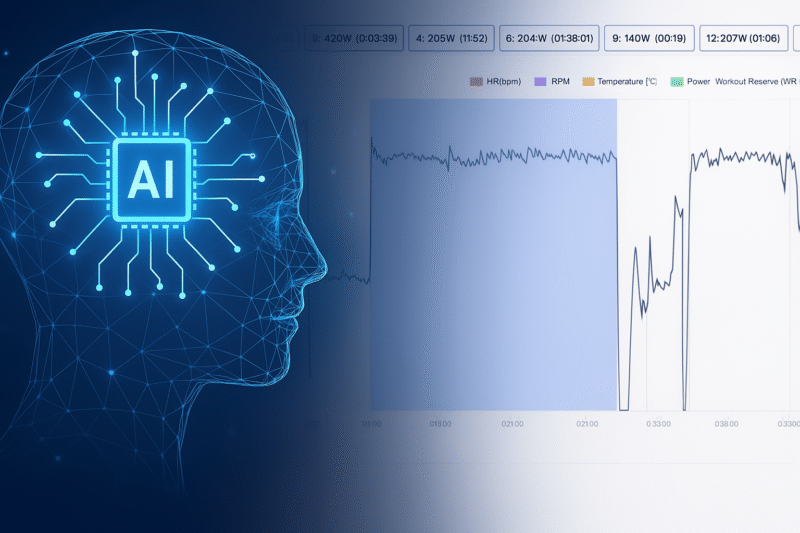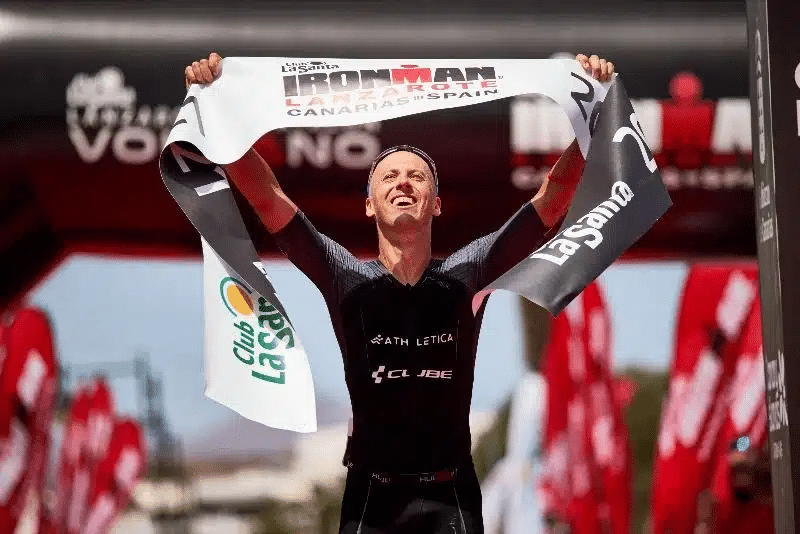How Athletica AI Detects Your Intervals (Even Without Laps!)
Timestamp guide
|
Time |
Topic |
|
0:00 – 0:30 |
Why we tackled automatic interval detection & how it differs from Intervals.icu |
|
0:31 – 1:21 |
Algorithm finds all intervals, not just the “best” ones |
|
1:22 – 2:44 |
30/30 example – capturing the true 26 s work-bout |
|
2:45 – 3:09 |
Benefits for indoor structured workouts & compliance scoring |
|
3:10 – 3:59 |
Outdoor application & analysing unstructured sessions (races, fondos) |
|
4:00 – 4:27 |
My flat 70.3 case study – 10-11 power-stable blocks |
|
4:28 – 5:00 |
Why minimising spikes matters for race execution |
The User Story
You: A self-coached athlete—or a coach managing a dozen riders.
Your goal: Train smart, track progress, hit race day ready.
Your challenge: Ride data is messy. Outdoor sessions are rarely clean. Planned efforts get interrupted. Laps don’t tell the whole story.
Interval IQ™ turns session chaos into a clean, structured list of detected intervals—planned or accidental—so every watt has context.
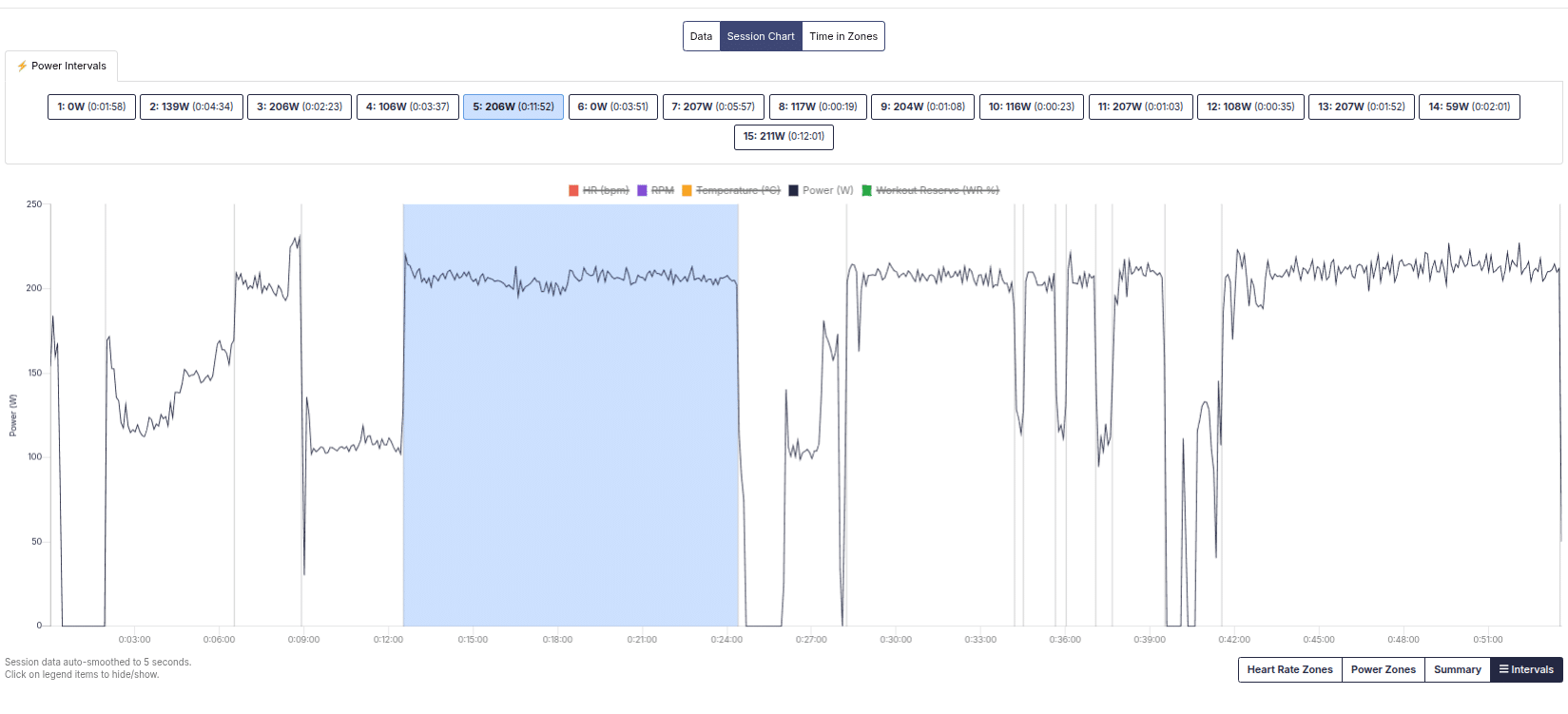
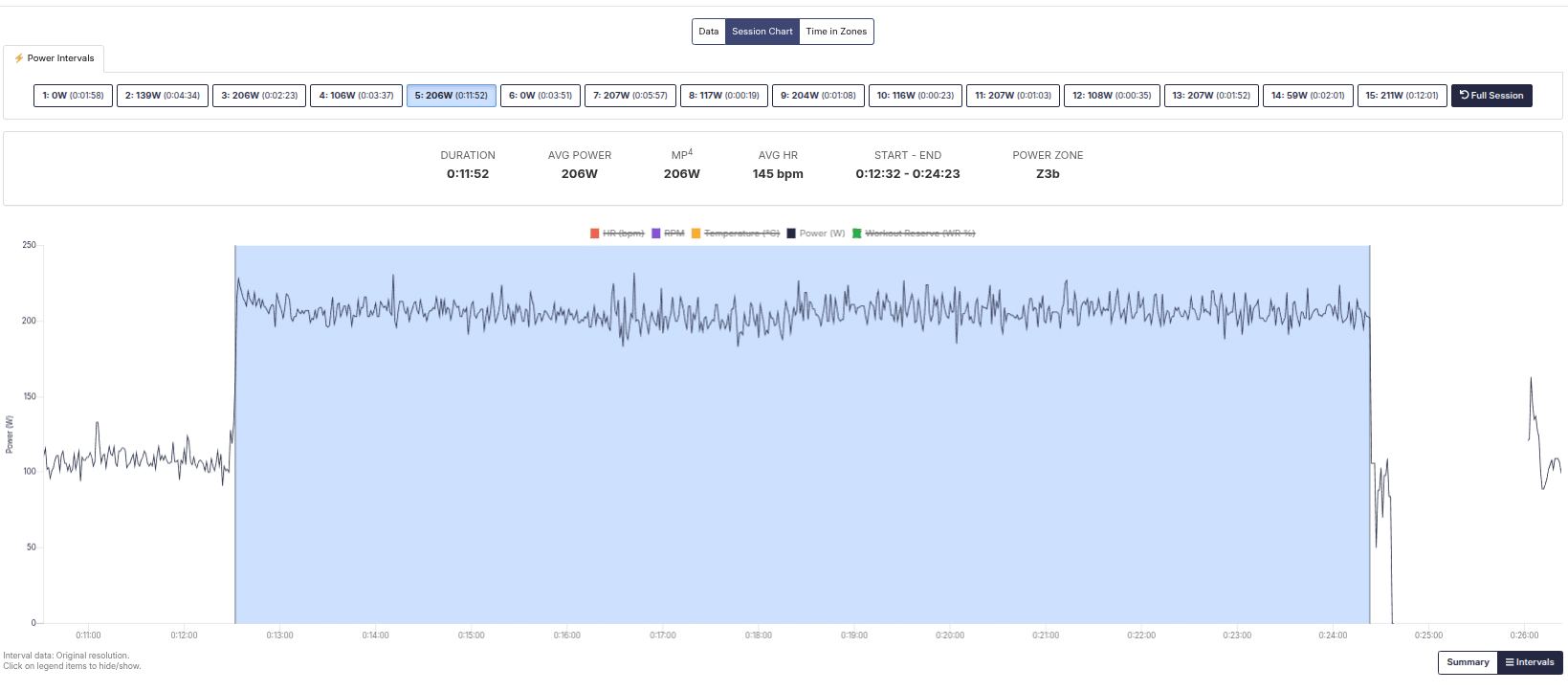
Figure 1A: Athletica’s Interval IQ automatically finds and displays your intervals so you don’t have to hunt for them. 1B: You can zoom in on any interval to display its data.
How Interval IQ™ works
- Signal processing – Smooths out spikes, drops, and noise from power data.
- Clustering engine – Uses change-point detection to identify segments of relatively constant power.
- Post-processing – Merges similar efforts, splits embedded spikes (e.g., 10s sprint inside a tempo block).
- Context tagging – Each interval gets duration, average/MP⁴, zone, and HR labels.
- AI Coach integration (coming soon) – Intervals feed directly into compliance scoring and AI Coach analysis/interpretation.
What It Solves
| Pain Point | Before Interval IQ | After Interval IQ |
| Hidden sprint PBs | Buried in 20,000 data points | Auto-surfaced |
| VO₂ laps | Misleading averages from slow start or overextended end | 26s–33s real bout detected |
| Outdoor variability | Lap data not always reflective of efforts and execution | Efforts isolated, more nuanced analysis |
| Coach review | 15 min per file | 2 min skim |
Demo: automatic interval detection in action
- Indoor ERG workout – virtual laps align tighter than button laps. See Figures 1 and 2. The system adapts to your actual execution, not a rigid stopwatch. This is a major upgrade over traditional lap data, which simply records time blocks without understanding what you did during them.
- Rolling 4 × 25 min Z3 session – Lap data says “done,” but pacing was broken, see Figure 3:Interval IQ identifies the valid Z3 blocks and exposes poor execution in others.
- Race file: We isolate both explosive and steady efforts from noisy race data. (Figures. 4 and 5)
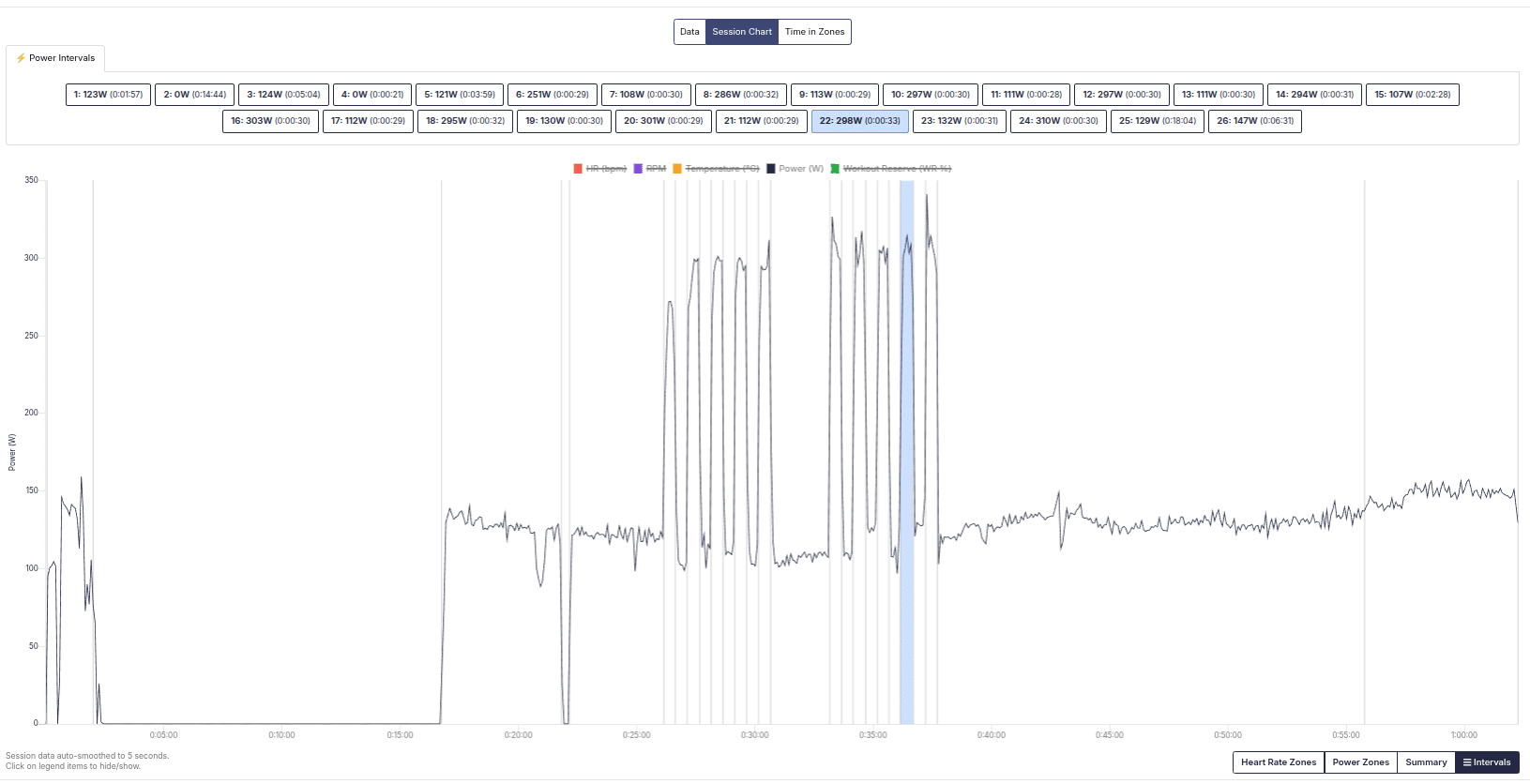
Figure 2. Structured 30/30 HIIT ride executed on the trainer. Efforts are automatically detected, whether they last 30 seconds, 33 seconds, or 27.

Figure 3. Structured ride executed outdoors (because who wants to ride the trainer on a summer day?). The target was 4 × 25-minute Zone 3 efforts, but execution wasn’t as clean as it should have been. I was compliant at the start and finish (circled in red), thanks to clear roads and steady pacing. But in the middle of the ride, things fell apart; urban sections, interruptions, and a 10-minute climb turned one of the planned 25-minute efforts into fragmented bursts (highlighted in yellow), well below the intended duration and consistency.
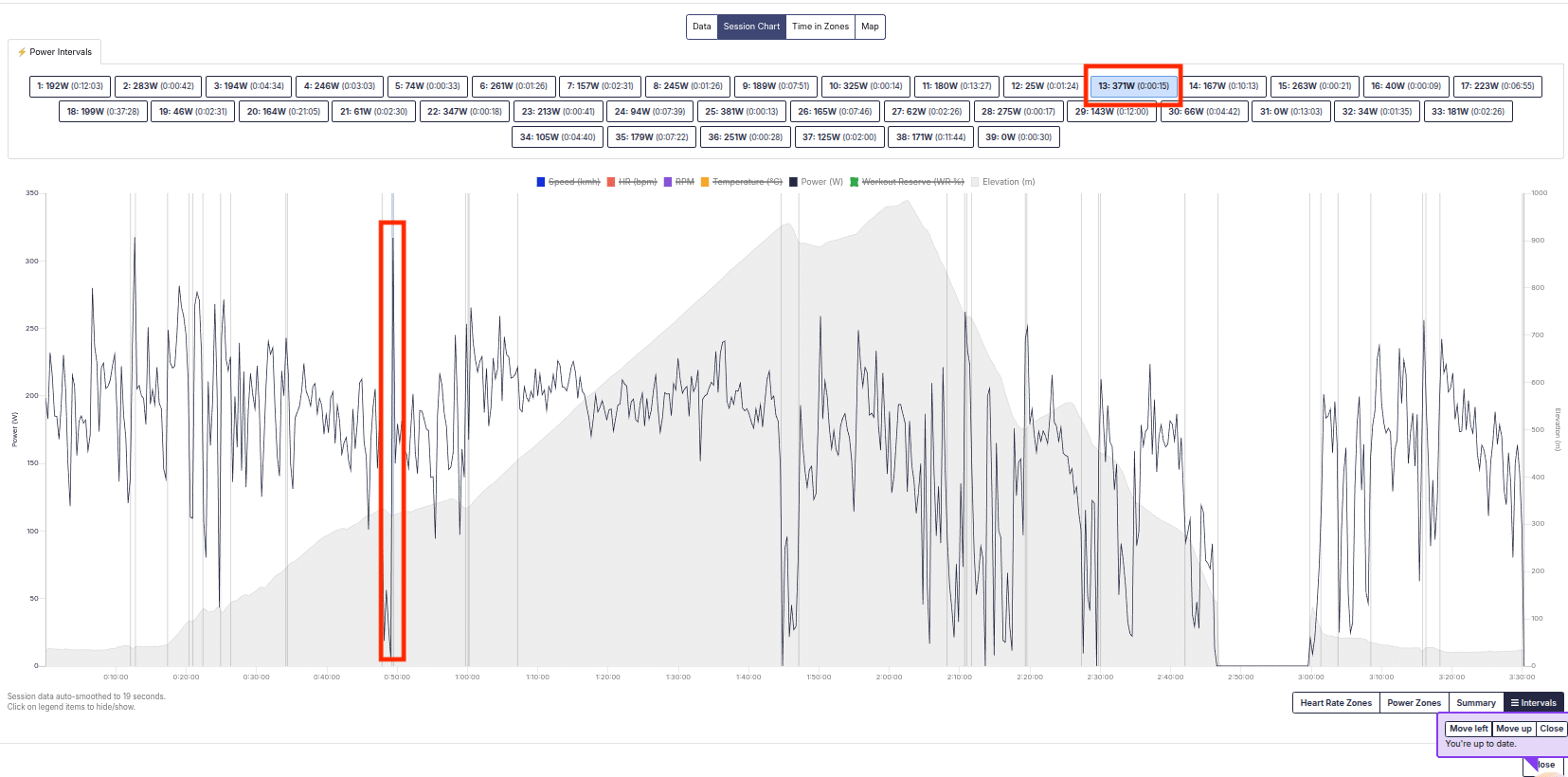
Figure 4. Race day (70.3 Nice): you can see the (completely unnecessary) aggressive way I attacked a short climb. The algorithm can identify the spikes in the noisier background. That helps us learn to improve the next time.
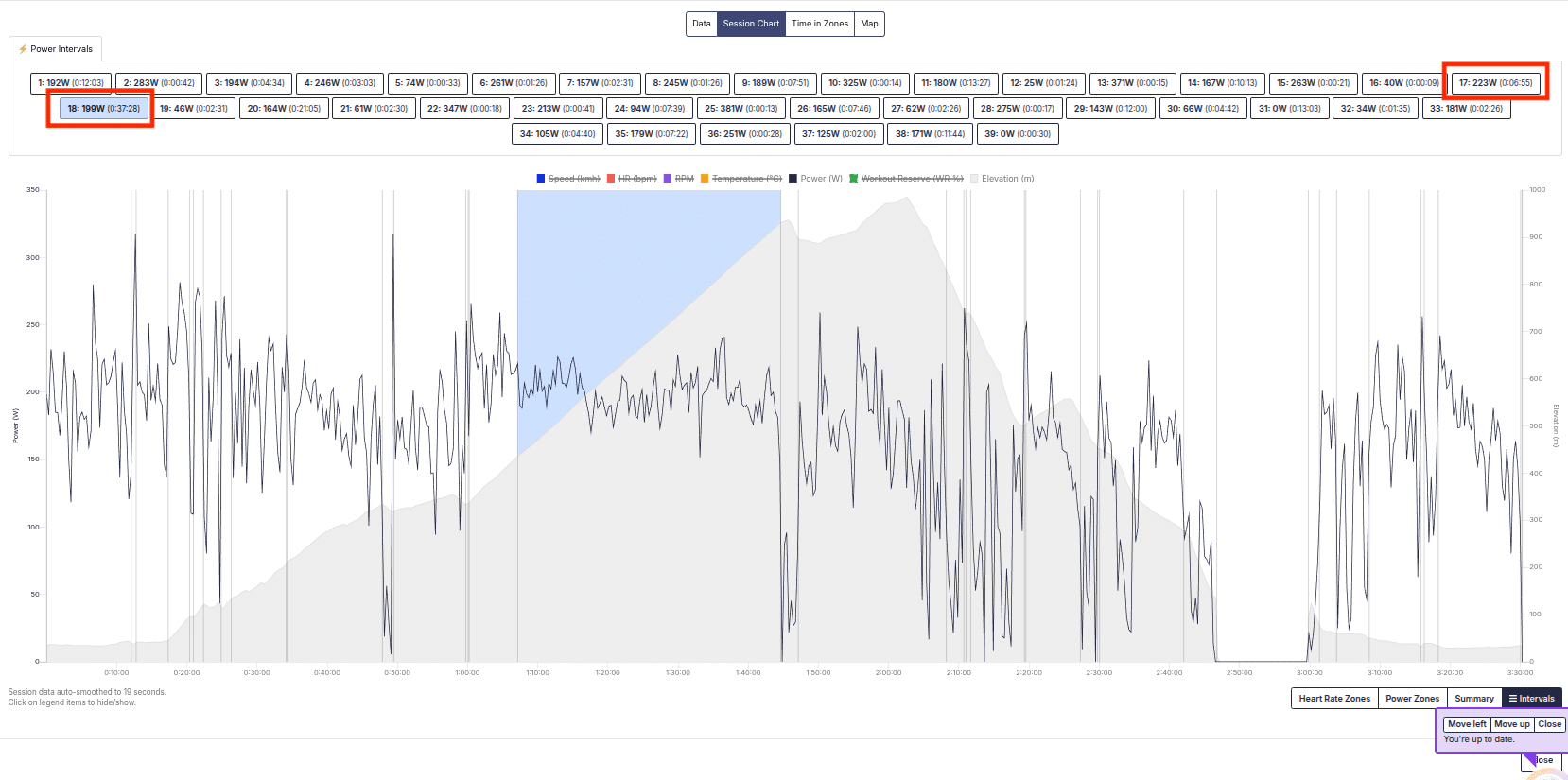
Figure 5. Race day climb: I managed to keep a somewhat steady effort along the climb. I started at around 220 W (almost Z4, because I got excited!) but slowly dropped to a steadier 200W fearing blowing up on the run.
Roadmap
| Sport / Metric | Status | ETA* |
| Cycling power | Live | — |
| Running power & pace | Alpha | Q4 2025 |
| Rowing power | Planned | Early 2026 |
| Swimming pace (pool & OWS) | Planned | 2026 |
| Heart-rate-only detection | R & D | — |
| Elevation (for climbing intervals) | R & D | — |
*Dates subject to your feedback and the usual Athletica magic!
Try it on your own chaos
For athletes
- Start a free 14-day Athletica trial (uploads two years of history).
- Open any ride → Session Chart → watch the barcode appear.
- [Coming soon!] Let the AI Coach analyse your intervals in relation to historical context.
For coaches
Visit our Coaching page to find out more about our coach platform.
Email [email protected] to book a personal demo and see how Interval IQ streamlines athlete management.
FAQ – Interval IQ™ & automatic interval detection
Is Interval IQ really automatic, or do I need to tag laps first?
100 % automatic. Upload the file—Interval IQ clusters power data and creates “virtual laps” even if you never touched the lap button.
How accurate is the detection outdoors?
On clean power-meter data, interval boundaries average ≤ 2 s error.
Do coaches see the same intervals?
Yes—athlete and coach data sync in real time, so feedback threads stay fully aligned.
Can Interval IQ handle different sports and power sources?
We are working on this, see the Roadmap.
How does Interval IQ distinguish between intentional intervals and incidental power fluctuations?
The data is smoothened so incidental fluctuations are almost entirely removed. Although we keep separate intervals for exactly 0 power or corresponding to pauses.
Can I customize sensitivity or detection parameters? (E.g., minimum interval duration, power threshold, smoothing level)
Not at the moment. But this is indeed currently considered as a possible UX improvement.
Does Interval IQ work well with noisy or less reliable power meters?
Like for any type of data source, we work under the assumption that all data we receive is coming from an accurate device, so if there is garbage in, there is going to be garbage out.
Can I edit or override automatically detected intervals if needed?
Not at the moment.
How does Interval IQ integrate with existing training plans or third-party platforms?
At the moment, it works only within the Athletica platform – sign up to try it out!
Is Interval IQ available in real-time (live during rides) or only post-ride?
Only post ride.
How does Interval IQ handle interval compliance scoring?
This is work in progress – see our Roadmap.
Will Interval IQ work on workouts that include coasting, recovery spins, or mixed efforts?
It works on any workout and ride.
Does the AI Coach use Interval IQ data to recommend recovery or rest days?
This is work in progress – see our Roadmap.
Are detected intervals exportable for further analysis in other software?
Not as of now.
About the author
Stefano Andriolo, PhD pivoted from theoretical physics (string theory, cosmology) to applied data science in endurance sport. Now he designs models to extract and analyze signal from athletic chaos. He’s chasing his own CP curve between code pushes, usually on Alpine climbs or prepping for his next 70.3.

